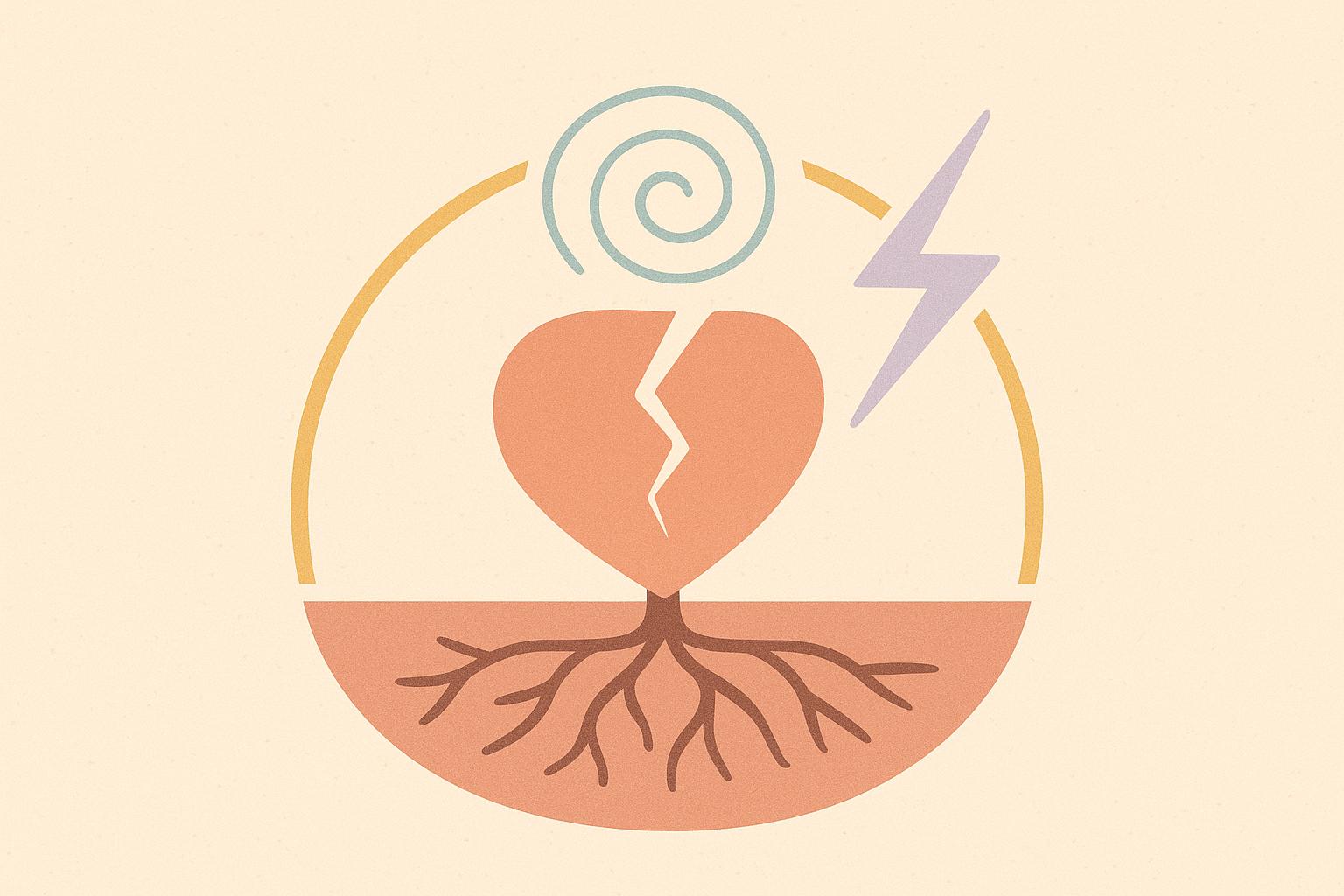Does this feel familiar? You have a cup of coffee and suddenly your heart is racing with anxiety. A car door slams outside and you jump out of your skin. You feel utterly exhausted, yet you lie in bed at night with your mind running a million miles an hour.If you feel constantly “on,” jittery, and overwhelmed, you’re not broken. You’re likely living with a dysregulated nervous system that’s stuck in survival mode.Your body’s ancient fight-or-flight response, designed to save you from short-term threats, has become your daily operating system. But you don’t have to live this way. In this blog, you’ll learn the 5 key signs that your nervous system is overwhelmed and discover one gentle, powerful exercise to begin resetting it today.
How to Recognize a Dysregulated Nervous System
When your body is constantly anticipating danger, it sends out clear signals. Recognizing them is the first step toward healing.
1. Physical Hypervigilance & Jitteriness You’re easily startled by loud noises, constantly scan your environment for threats, and feel a persistent, low-level hum of anxious energy in your chest or stomach. This is your body physically preparing for a threat that never comes, leaving your muscles tense and your senses on high alert.
2. Unexplained Digestive Issues When your body is in survival mode, it diverts energy away from "non-essential" processes like digestion. This can lead to chronic issues like bloating, stomach cramps, or IBS symptoms. If you’ve noticed your stomach is often upset, especially during stressful periods, it’s a classic sign that your nervous system is calling the shots.
3. Racing Thoughts & Inability to Focus You can't concentrate on a single task because your mind is jumping from one worry to the next. This isn't a personal failure; it's your brain’s threat-detection system working overtime. It’s trying to anticipate every possible negative outcome, making it impossible to focus on the present moment.
4. High Emotional Reactivity Do you find yourself snapping at loved ones over small things? Or bursting into tears unexpectedly? When your nervous system is already at capacity, you have zero buffer for everyday frustrations. Small triggers can lead to big emotional reactions because your emotional cup is already overflowing.
5. Feeling "Tired but Wired" This is the ultimate paradox. You feel bone-deep exhaustion, yet you can’t truly rest or fall asleep. Your body is pumping out stress hormones like cortisol and adrenaline, keeping you artificially alert even when your energy reserves are completely depleted.
A Gentle First Step to Reset Your System: The Orienting Technique
If these signs resonate, let’s take a moment to send your body a signal of safety right now. We’ll use a simple somatic technique called "Orienting."The goal is to use your eyes to tell your brain that you are safe in your current environment.
- Find a comfortable seated position. Let your feet rest flat on the floor.
- Slowly, let your eyes scan the room. Don't force it. Let your head and neck turn naturally.
- Let your eyes land on things that seem neutral or pleasant. Don’t just look; really see them. Notice the color of a book on your shelf. The way the light hits a plant. The texture of a blanket.
- Keep scanning until you find 3-4 objects that feel calming or interesting to you.
- As you do this, notice what’s happening inside your body. Do you feel your breathing slow down, even a little? Do you feel your shoulders drop? This is your nervous system getting the message: "You are safe here. There is no immediate threat."
This single exercise can offer a powerful moment of relief. It’s proof that you can influence your nervous system.But to create lasting change and pull yourself out of a chronic state of survival, you need more than just one tool. You need a complete toolbox and a structured approach to retrain your body and mind to feel safe again. That’s precisely why I created the Nervous System Regulation Workbook.
This workbook isn’t just a collection of exercises; it’s a step-by-step roadmap. It gently guides you through understanding the science of your own nervous system (like Polyvagal Theory), helps you map your unique triggers, and provides a library of somatic exercises to use in any situation, from a stressful work meeting to a sleepless night.
Ready to Move from Surviving to Thriving?
Imagine feeling calm and grounded in your body. Imagine having the energy to enjoy your life instead of just getting through it.Stop trying to fight the feeling of being "on edge" and start working with your body to create true safety from within. The Nervous System Regulation Workbook gives you the gentle, structured support you need to do just that.
Get the Workbook HERE & Find Your Lasting Calm Today
Frequently Asked Questions
Q: Will this solve my anxiety overnight?
A: Regulating your nervous system is a practice, not a quick fix. While you can feel immediate relief from these exercises, the workbook is designed to help you build a foundation for lasting calm and resilience over time.
Q: Is this complicated? I'm already overwhelmed.
A: Not at all. The workbook is designed to be gentle and accessible. It breaks down every concept into simple, easy-to-understand language and provides step-by-step guidance for each exercise, ensuring you never feel overwhelmed.
Q: I've tried everything. Why would this be different?
A: Many approaches focus only on changing your thoughts (mindset). This workbook is different because it's 'bottom-up.' It focuses on calming your body first, which then sends signals of safety to your brain. For many, this is the missing piece of the puzzle.
Q: Is this a replacement for therapy?
A: No. This workbook is a powerful self-guided tool for education and support, and can be an excellent complement to therapy. It is not, however, a substitute for professional medical advice or treatment from a qualified therapist.

